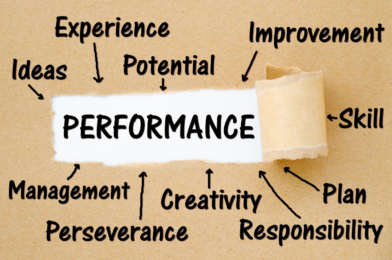Retirement may seem like a distant prospect, but saving for those golden years is a marathon, not a sprint. Starting early and maintaining consistent contributions are essential strategies for building a comfortable nest egg. Here’s a comprehensive guide to help you navigate retirement savings at any age:
In Your 20s: Laying the Foundation
The earlier you start saving for retirement, the more time your investments have to grow. Thanks to the power of compound interest, even small contributions in your 20s can grow significantly over time. Aim to contribute to your employer-sponsored 401(k) plan, especially if they offer matching contributions. If a 401(k) isn’t an option, consider opening a Roth IRA. These accounts offer tax-free growth and withdrawals in retirement, and you can contribute up to $6,000 in 2023 ($7,000 if you’re 50 or older). Take advantage of compound interest by investing in a mix of stocks and mutual funds to boost your savings.
In Your 30s: Increasing Contributions
As your career advances and your income grows, aim to increase your retirement contributions. If you started saving in your 20s, review and adjust your investments to align with your long-term goals. Consider allocating a larger portion of your portfolio to stocks, as historical market trends show that stocks tend to outperform other investments over time. Additionally, if you’re thinking of buying a home, a portion of your retirement savings could be directed towards a down payment.
In Your 40s: Catch-Up Contributions
If you find yourself nearing middle age with insufficient retirement savings, it’s time to ramp up your contributions. The IRS allows catch-up contributions for individuals aged 50 and older, letting you put away more tax-deferred money in your retirement accounts. Maximize your 401(k) contributions, and if you’re self-employed or don’t have access to a 401(k), look into opening a Solo 401(k) or a Simplified Employee Pension (SEP) IRA. These accounts offer higher contribution limits and can help you catch up quickly.
In Your 50s: Fine-Tuning Your Strategy
As retirement draws closer, it’s crucial to ensure your savings are on track. Review your investments and rebalance your portfolio to maintain your desired asset allocation. If you haven’t already, consider working with a financial advisor to create a detailed retirement plan. This includes calculating your expected expenses, factoring in inflation, and determining whether you should delay Social Security benefits to maximize your monthly payments.
In Your 60s: Preparing for Retirement
Now is the time to finalize your retirement plans and make any last-minute adjustments. Decide when you want to retire and calculate your expected income sources, including Social Security, pensions, and retirement savings. Consider creating a budget to ensure your income covers your expected expenses. If you plan to work part-time during retirement, explore potential opportunities. Remember, the longer you can delay tapping into your retirement savings, the more time your investments have to grow.
Regardless of Your Age: Start Now and Stay Consistent
No matter your current age, the most important thing is to start saving for retirement today. Time is your greatest asset when it comes to building a comfortable nest egg. Automate your savings by setting up regular contributions from your paycheck or bank account directly into your retirement accounts. By treating your retirement savings like any other essential bill, you’ll stay on track and set yourself up for a financially secure future.
Understanding Risk and Asset Allocation
Retirement savings vehicles like 401(k)s and IRAs typically offer a range of investment options, including stocks, bonds, mutual funds, and exchange-traded funds (ETFs). The key to successful investing is understanding and managing risk. Generally, younger investors can tolerate more risk by allocating a larger portion of their portfolio to stocks, as they have time to recover from market downturns. As you approach retirement age, it’s wise to shift towards more conservative investments, such as bonds and fixed-income funds, to protect your savings.
Diversification is another crucial aspect of successful investing. By diversifying your portfolio across different asset classes, sectors, and geographic regions, you reduce the impact of market volatility on your savings. Regularly review and rebalance your portfolio to ensure it aligns with your risk tolerance and long-term goals.
Maximizing Employer-Sponsored Plans
If your employer offers a 401(k) or similar retirement plan, contribute as much as you can afford, especially if they match your contributions. These matching funds are essentially free money, boosting your retirement savings significantly. In 2023, the maximum contribution limit for 401(k) plans is $22,500 ($29,000 if you’re 50 or older). If you can maximize your contributions, you’ll not only benefit from tax advantages but also fully capitalize on your employer’s matching program.
For example, let’s say your employer matches 50% of your contributions up to 6% of your salary. To receive the maximum match, you should contribute at least 6% of your salary to your 401(k). Anything less, and you’re leaving free money on the table. Additionally, some employers may offer profit-sharing or additional matching programs for certain contributions. Review your plan’s details to ensure you’re taking full advantage of these benefits.
Alternative Retirement Savings Options
While 401(k)s and IRAs are the most common retirement savings vehicles, there are other options to consider, especially if you’re self-employed or have maxed out your contributions to these accounts. Solo 401(k)s, SEP IRAs, and SIMPLE IRAs are designed for self-employed individuals and small business owners, offering higher contribution limits and flexible funding options.
Health Savings Accounts (HSAs) are another powerful tool for retirement savings. These accounts let you set aside pre-tax money to pay for qualified medical expenses, and any unused funds can be invested and carried over year after year. Upon retirement, you can withdraw the funds tax-free for medical expenses or for any reason after paying regular income taxes.
Lastly, consider investing in rental properties or purchasing an annuity. Rental properties can provide a steady income stream during retirement, while annuities offer guaranteed payments for a specified period or even for life. However, be sure to carefully evaluate the risks and costs associated with these options before investing.
In conclusion, saving for retirement is a lifelong journey that requires discipline, consistency, and a solid understanding of investment strategies. Start early, take advantage of tax-advantaged accounts and employer matching programs, and regularly review and adjust your investments to stay on track. By making retirement savings a priority, you’ll be rewarded with financial security and peace of mind during your golden years.










